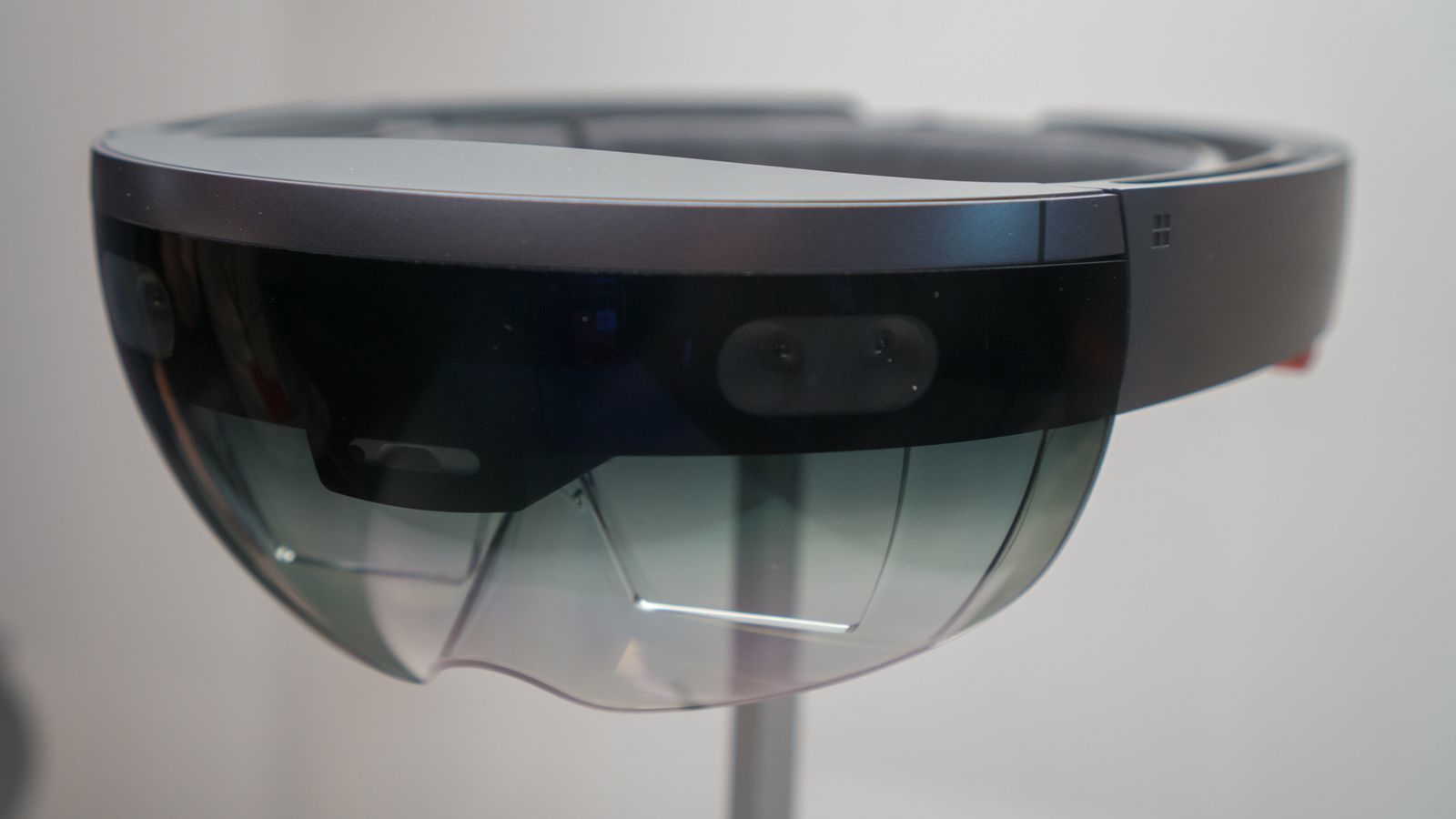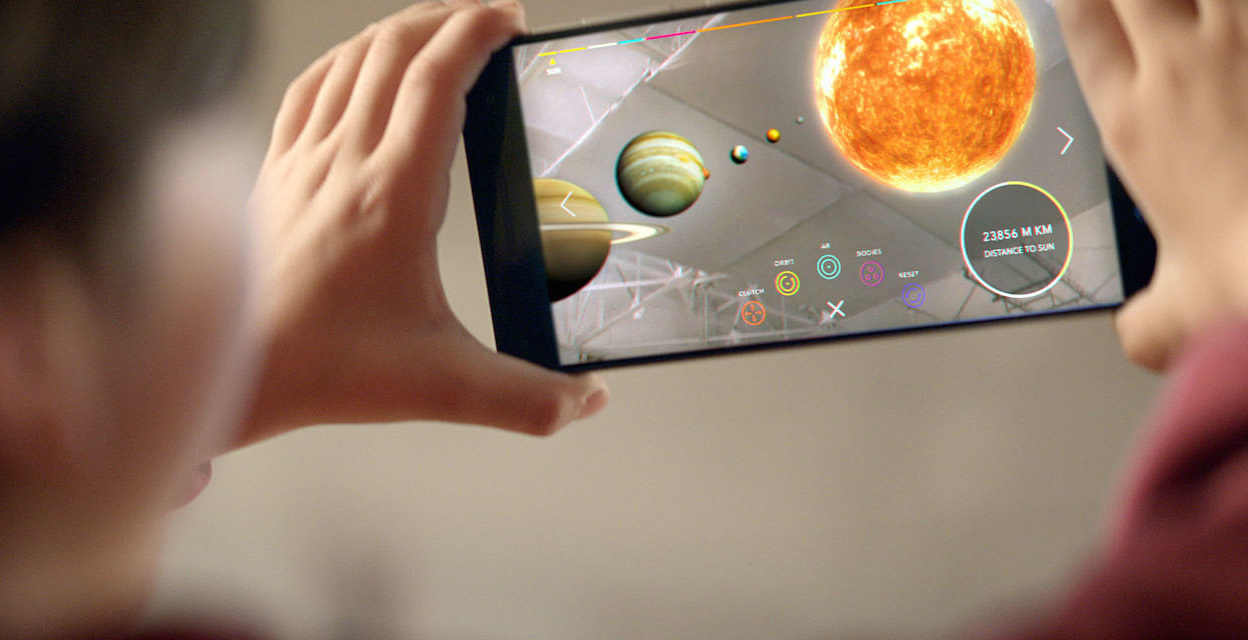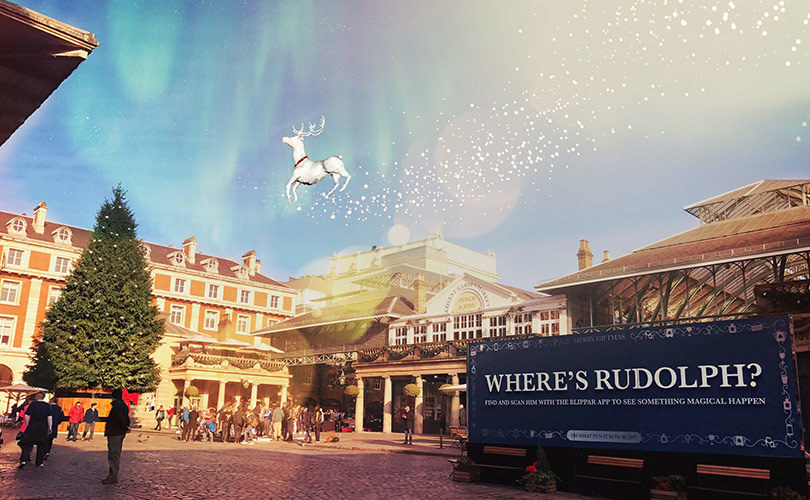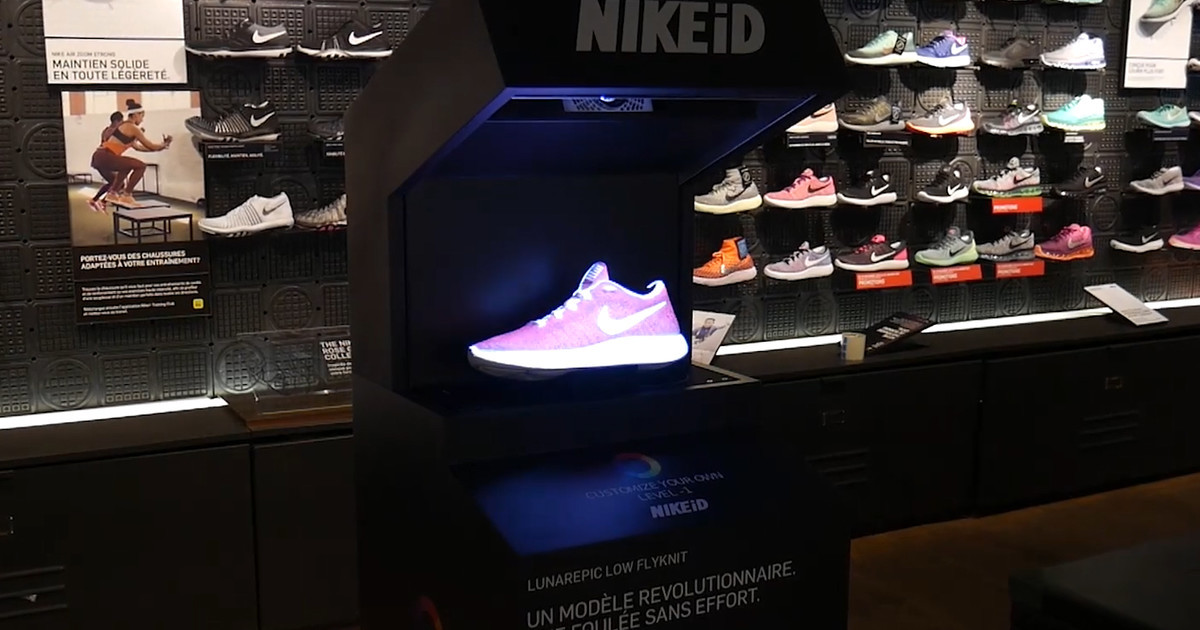As augmented reality attracts and sells
In our last article about payments made using virtual reality, it was said that VR payments in 2018 will become mainstream . In today's article we will talk about how augmented reality is used by various companies to attract customers and make a profit.
Originally, augmented reality systems were invented in the early 1990s at Armstrong Labs, an organization dedicated to research and development for the United States Air Force. It was a cumbersome device for increasing human productivity in work with both remote and immediate goals and objectives.

')
Louis Rosenberg tests the system
In 1998, augmented reality came to TV and sports. For the first time it began to be used to display a virtual line when broadcasting sports events. The computer system generates and displays the yellow line, which players do not see, but viewers during American football matches. The goal of the line is to simplify the process of the game for the audience. In some television broadcasts, the computer system changes the color of the line from yellow to red, depending on the serial number of the down or on the real image, a second virtual line is superimposed, usually blue, which indicates the line of the fight .
Years went by, the power of computer and mobile hardware increased. At the same time, their dimensions decreased, new-level devices appeared.
The most famous augmented reality device is Google Glass . The Google Glass project, much about which was written on Habré and Geektimes, was launched in 2013. The interaction of Glass with the user was carried out through voice control of the initial phrase “Ok, Glass”, and the additional image was output by a mini-projector on a prism that projected the layer of the additional image over the real one.

Unfortunately, in early 2015, Google announced the suspension of production. However, at the same time, a similar product was presented - Microsoft HoloLens glasses. The device is a mini computer with a translucent screen, which is worn on the head and does not require connection with other devices to work. Objects are displayed on the screen and the visible world is complemented by virtual images.

In addition to creating and using AR using wearable devices, IT giants are creating more familiar consumer devices - smartphones with Google Tango support. The first such mass device was the Lenovo Phab 2 Pro, now it will compete with the ASUS ZenFone AR announced at CES 2017.
Google's Tango project is a hardware and software platform designed primarily to create a 3D model of the world around it. Thanks to special cameras and sensors, mobile devices can track objects and scan rooms, creating a full-fledged 3D map. Project Tango allows you to create a three-dimensional model of the world around the device, update it and impose additional information in real time.

In addition to the Google project, which is only in the process of development, augmented reality is already being used by companies, and for this purpose no special devices are needed.
In November 2016, the French department store network Galeries Lafayette used AR to show stories about a family of polar bears that go far from the North Pole due to melting ice. The story comes to life before the eyes of visitors using their own mobile devices or via tablets placed in the store. The idea of the project is to attract customers for more visits and, accordingly, more purchases and higher profits in the long term.
According to Sky Boy, a company that has implemented augmented reality on the Galeries Lafayette network, the experience was positive: over 12,000 likes and 250,000 views in two days.
Covent Garden, a popular shopping spot in London, has also been transformed . During the 2016 Christmas season, this area of London received an augmented reality in 140 stores and restaurants in one million square feet of space.

Visitors for six weeks could receive special discounts that were only available through a mobile application, or participate in the hunt for virtual reindeer hidden throughout the area, as well as meet Santa Claus in an interactive grotto next door or see a digital deer, soaring above the square. The action was initiated by Hearst Magazines UK holding and application developer with augmented reality Blippar.
But augmented reality and elements of gamification are not used in commerce for the first time.
The mobile game Pokemon Go, which made it possible to find virtual creatures in the real world, was used by banking organizations to draw attention to their products literally in the first weeks after launch - we wrote about this in July 2016. Then, Russian banks were among the first to offer customers gaming or real bonuses in their branches.

In retail, augmented reality is also used for more obvious actions than attracting customers with a reserve for future profit: virtual fitting rooms. One of the last in the past year, the international payment system Visa presented its version of such a fitting room. At the Toronto Film Festival, a virtual wardrobe, advertised as the future of e-commerce, allowed customers to try on several clothes with augmented reality.
And in January of this year, Nike presented an AR-stand with sneakers in a store on the Champs Elysees in Paris. Customers can create their own shoe designs and try them on real AirMax, LunarEpic Low, and Cortez models.

The stand works on 3D-mapping technology : an image is projected onto the shoes, which, when the buyer is located at a certain point, colors the sneakers in the selected color in real time. Video mapping technology (3D mapping) also applies to augmented reality.
For several years now, augmented reality has been used in IKEA: customers can see how this or that object will fit into their interior, prior to purchase. Now there is no need to have a catalog or information printed out from there - using the latest versions of the application, items from the catalog can be placed in the interior of your house (in fact, check if the item is suitable for size) instantly.

If you look at investing in AR technology, the biggest venture capital investments recently attracted such projects:
Magic Leap - a company for several years developing a virtual reality helmet, similar to Google Glass or Microsoft HoloLens. In 2016, she received $ 793 million without a finished product.
ODG - Osterhout Design Group, known for smart glasses and other devices for organizations such as the US Army, raised $ 58 million in investment in December.
Blippar - the company mentioned above uses machine learning and AR for visualizing and recognizing objects using mobile applications. The company received 54 million dollars in 2016.
Meta is another smart glasses company. Attracted 50 million dollars.
Lumus is a company that also develops equipment in the form of glasses that allow the use of augmented reality. 45 million dollars.
uSens - deals with devices that allow you to interact with digital objects using gestures. The company raised $ 20 million in 2016.

In total, VR / AR venture capital financing of companies reached $ 1.8 billion in 2016.
Apple has not officially confirmed the intention to release any product using VR or AR. However, Apple CEO Tim Cook said in an interview with ABC News that he considers augmented reality more promising and commercially viable than virtual. The same conclusions he voiced in the Buzzfeed interview:
“VR has some interesting uses, but I don’t find it to be as comprehensive as AR,” Cook explained. “It will take some time for augmented reality, but it will be thorough.”
Now augmented reality is used in military technology and automotive, as well as in medicine, printing, advertising, computer or mobile games. The technology is used in architecture and geology, navigation and tourism, and is widely used to broadcast sports events.
Will we see, how the world around us change the described projects, or the current development will go away, and new ones will take their place, in any case it will be interesting further. Stay tuned.

Source: https://habr.com/ru/post/399301/
All Articles